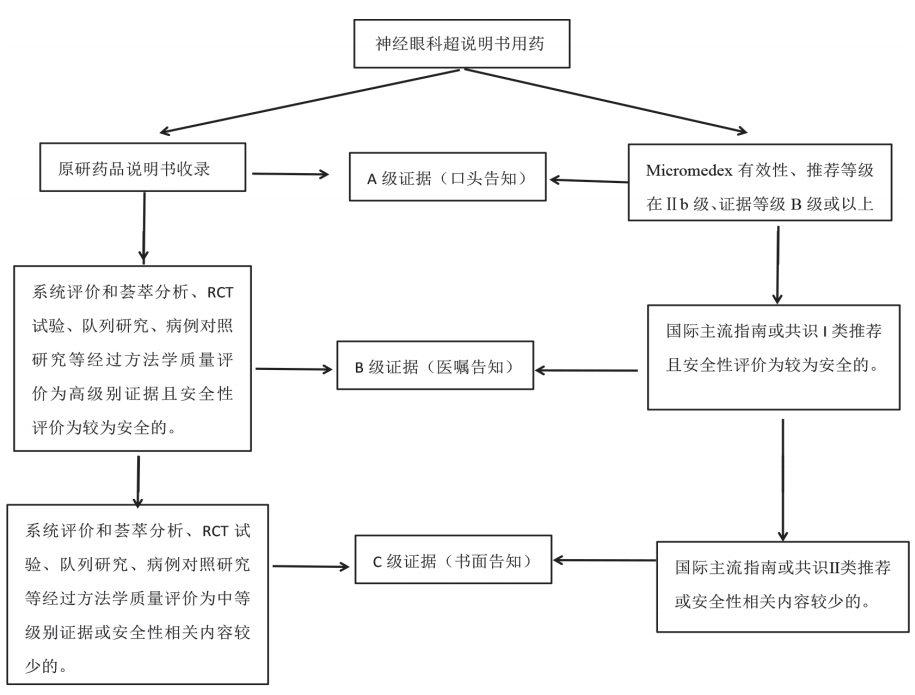1、白文浩, 孙明明, 徐歆桐, 等. 单中心神经眼科住院患者疾病
谱及流行病学分析[ J]. 眼科学报, 2023, 38(3): 190-198. DOI:
10.12419/j.issn.1000-4432.2023.03.03.
Bai WH, Sun MM, Xu XT, et al. Spectrum and Epidemiological
Analysis of Neuro-ophthalmology Inpatients in a Single Center [ J].
Acta Ophthalmologica Sinica, 2023, 38(3): 190-198. DOI: 10.12419/
j.issn.1000-4432.2023.03.03.Bai WH, Sun MM, Xu XT, et al. Spectrum and Epidemiological
Analysis of Neuro-ophthalmology Inpatients in a Single Center [ J].
Acta Ophthalmologica Sinica, 2023, 38(3): 190-198. DOI: 10.12419/
j.issn.1000-4432.2023.03.03.
2、《中华人民共和国医师法》.(2021年8月20日).中国政府网.
https://www.gov.cn/xinwen/2021-08/20/content_5632496.htm.《中华人民共和国医师法》.(2021年8月20日).中国政府网.
https://www.gov.cn/xinwen/2021-08/20/content_5632496.htm.
3、邱凯锋, 何志超, 陈泽鹏, 等. 《超说明书用药循证评价规范》团
体标准解读[ J]. 今日药学, 2021, 31(11): 811-814.DOI: 10.12048/
j.issn.1674-229X.2021.11.002.
Qiu KF, He ZC, Chen ZP, et al. Interpretation of the Group
Standard for Evidence-based Evaluation of Off-label Drug Use[ J].
Pharmacy Today, 2021,31(11):811-814. DOI:10.12048/j.issn.1674-
229X.2021.11.002.Qiu KF, He ZC, Chen ZP, et al. Interpretation of the Group
Standard for Evidence-based Evaluation of Off-label Drug Use[ J].
Pharmacy Today, 2021,31(11):811-814. DOI:10.12048/j.issn.1674-
229X.2021.11.002.
4、Klopstock T, Yu-Wai-Man P, Dimitriadis K, et al. A randomized
placebo-controlled trial of idebenone in Leber's hereditary optic
neuropathy[ J]. Brain, 2011, 134(Pt 9): 2677-2686. DOI: 10.1093/
brain/awr170.Klopstock T, Yu-Wai-Man P, Dimitriadis K, et al. A randomized
placebo-controlled trial of idebenone in Leber's hereditary optic
neuropathy[ J]. Brain, 2011, 134(Pt 9): 2677-2686. DOI: 10.1093/
brain/awr170.
5、Zhang C, Zhang M, Qiu W, et al. Safety and efficacy of tocilizumab
versus azathioprine in highly relapsing neuromyelitis optica spectrum
disorder (TANGO): an open-label, multicentre, randomised, phase 2
trial[ J]. Lancet Neurol, 2020, 19(5): 391-401. DOI: 10.1016/S1474-
4422(20)30070-3.Zhang C, Zhang M, Qiu W, et al. Safety and efficacy of tocilizumab
versus azathioprine in highly relapsing neuromyelitis optica spectrum
disorder (TANGO): an open-label, multicentre, randomised, phase 2
trial[ J]. Lancet Neurol, 2020, 19(5): 391-401. DOI: 10.1016/S1474-
4422(20)30070-3.
6、中国免疫学会神经免疫分会. 中国视神经脊髓炎谱系疾病诊
断与治疗指南(2021版)[ J]. 中国神经免疫学和神经病学杂志,
2021, 28(6): 423-436. DOI: 10.3969/j.issn.1006-2963.2021.06.002.
Chinese Society of Immunology, Neuroimmunology Branch.
Guidelines for the Diagnosis and Treatment of Neuromyelitis Optica
Spectrum Disorders in China (2021)[ J]. Neuroimmunol Neurol, 2021,
28(6): 423-436. DOI: 10.3969/j.issn.1006-2963.2021.06.002.Chinese Society of Immunology, Neuroimmunology Branch.
Guidelines for the Diagnosis and Treatment of Neuromyelitis Optica
Spectrum Disorders in China (2021)[ J]. Neuroimmunol Neurol, 2021,
28(6): 423-436. DOI: 10.3969/j.issn.1006-2963.2021.06.002.
7、Moura%20J%2C%20Sam%C3%B5es%20R%2C%20Sousa%20AP%2C%20et%20al.%20Prognostic%20factors%20associated%20with%20%0Adisability%20in%20a%20cohort%20of%20neuromyelitis%20optica%20spectrum%20disorder%20and%20%0AMOG-associated%20disease%20from%20a%20nationwide%20Portuguese%20registry%5B%20J%5D.%20J%20%0ANeurol%20Sci%2C%202024%2C%20464%3A%20123176.%20DOI%3A%2010.1016%2Fj.jns.2024.123176.Moura%20J%2C%20Sam%C3%B5es%20R%2C%20Sousa%20AP%2C%20et%20al.%20Prognostic%20factors%20associated%20with%20%0Adisability%20in%20a%20cohort%20of%20neuromyelitis%20optica%20spectrum%20disorder%20and%20%0AMOG-associated%20disease%20from%20a%20nationwide%20Portuguese%20registry%5B%20J%5D.%20J%20%0ANeurol%20Sci%2C%202024%2C%20464%3A%20123176.%20DOI%3A%2010.1016%2Fj.jns.2024.123176.
8、Shaygannejad V, Fayyazi E, Badihian S, et al. Long-term tolerability,
safety and efficacy of rituximab in neuromyelitis optica spectrum
disorder: a prospective study[ J]. J Neurol, 2019, 266(3): 642-650.
DOI: 10.1007/s00415-019-09180-9.Shaygannejad V, Fayyazi E, Badihian S, et al. Long-term tolerability,
safety and efficacy of rituximab in neuromyelitis optica spectrum
disorder: a prospective study[ J]. J Neurol, 2019, 266(3): 642-650.
DOI: 10.1007/s00415-019-09180-9.
9、Lagrèze WA , Küchlin S, Ihorst G, et al. Safety and efficacy of erythropoietin for the treatment of patients with optic neuritis
(TONE): a randomised, double-blind, multicentre, placebo-controlled
study[ J]. Lancet Neurol, 2021, 20(12): 991-1000. DOI: 10.1016/
S1474-4422(21)00322-7.Lagrèze WA , Küchlin S, Ihorst G, et al. Safety and efficacy of erythropoietin for the treatment of patients with optic neuritis
(TONE): a randomised, double-blind, multicentre, placebo-controlled
study[ J]. Lancet Neurol, 2021, 20(12): 991-1000. DOI: 10.1016/
S1474-4422(21)00322-7.
10、Akatani R , Chihara N, Koto S, et al. Eff icac y and safety of
mycophenolate mofetil for steroid reduction in neuromyelitis optica
spectrum disorder: a prospective cohort study[ J]. Immunol Med,
2024, 47(2): 85-92. DOI: 10.1080/25785826.2024.2304364.Akatani R , Chihara N, Koto S, et al. Eff icac y and safety of
mycophenolate mofetil for steroid reduction in neuromyelitis optica
spectrum disorder: a prospective cohort study[ J]. Immunol Med,
2024, 47(2): 85-92. DOI: 10.1080/25785826.2024.2304364.
11、Nuzzi R, Monteu F. Use of intravitreal dexamethasone in a case of
anterior ischemic optic neuropathy[ J]. Case Rep Ophthalmol, 2017,
8(2): 452-458. DOI: 10.1159/000479785.Nuzzi R, Monteu F. Use of intravitreal dexamethasone in a case of
anterior ischemic optic neuropathy[ J]. Case Rep Ophthalmol, 2017,
8(2): 452-458. DOI: 10.1159/000479785.
12、Huang W, Wang L, Zhang B, et al. Effectiveness and tolerability
of immunosuppressants and monoclonal antibodies in preventive
treatment of neuromyelitis optica spectrum disorders: a systematic
review and network meta-analysis[ J]. Mult Scler Relat Disord, 2019,
35: 246-252. DOI: 10.1016/j.msard.2019.08.009.Huang W, Wang L, Zhang B, et al. Effectiveness and tolerability
of immunosuppressants and monoclonal antibodies in preventive
treatment of neuromyelitis optica spectrum disorders: a systematic
review and network meta-analysis[ J]. Mult Scler Relat Disord, 2019,
35: 246-252. DOI: 10.1016/j.msard.2019.08.009.
13、Roda M, di Geronimo N, Pellegrini M, et al. Nutritional optic
neuropathies: state of the art and emerging evidences[ J]. Nutrients,
2020, 12(9): 2653. DOI: 10.3390/nu12092653.Roda M, di Geronimo N, Pellegrini M, et al. Nutritional optic
neuropathies: state of the art and emerging evidences[ J]. Nutrients,
2020, 12(9): 2653. DOI: 10.3390/nu12092653.
14、Bagheri S, Haddadi R, Saki S, et al. Neuroprotective effects of coenzyme
Q10 on neurological diseases: a review article[ J]. Front Neurosci,
2023, 17: 1188839. DOI: 10.3389/fnins.2023.1188839.Bagheri S, Haddadi R, Saki S, et al. Neuroprotective effects of coenzyme
Q10 on neurological diseases: a review article[ J]. Front Neurosci,
2023, 17: 1188839. DOI: 10.3389/fnins.2023.1188839.
15、Yu-Wai-Man P, Carelli V, Newman NJ, et al. Therapeutic benefit of
idebenone in patients with Leber hereditary optic neuropathy: The
LEROS nonrandomized controlled trial[ J]. Cell Rep Med, 2024, 5(3):
101437. DOI: 10.1016/j.xcrm.2024.101437.Yu-Wai-Man P, Carelli V, Newman NJ, et al. Therapeutic benefit of
idebenone in patients with Leber hereditary optic neuropathy: The
LEROS nonrandomized controlled trial[ J]. Cell Rep Med, 2024, 5(3):
101437. DOI: 10.1016/j.xcrm.2024.101437.
16、Küchlin S, Ihorst G, Grotejohann B, et al. Treatment w ith
erythropoietin for patients with optic neuritis: long-term follow-up[ J].
Neurol Neuroimmunol Neuroinflamm, 2023, 10(4): e200067. DOI:
10.1212/NXI.0000000000200067.Küchlin S, Ihorst G, Grotejohann B, et al. Treatment w ith
erythropoietin for patients with optic neuritis: long-term follow-up[ J].
Neurol Neuroimmunol Neuroinflamm, 2023, 10(4): e200067. DOI:
10.1212/NXI.0000000000200067.
17、Schoenberger SD, Kim SJ, Thorne JE, et al. Diagnosis and treatment
of acute retinal necrosis: a report by the American academy of
ophthalmology[ J]. Ophthalmology, 2017, 124(3): 382-392. DOI:
10.1016/j.ophtha.2016.11.007.Schoenberger SD, Kim SJ, Thorne JE, et al. Diagnosis and treatment
of acute retinal necrosis: a report by the American academy of
ophthalmology[ J]. Ophthalmology, 2017, 124(3): 382-392. DOI:
10.1016/j.ophtha.2016.11.007.
18、Wingerchuk DM, Banwell B, Bennett JL, et al. International
consensus diagnostic criteria for neuromyelitis optica spectrum
disorders[ J]. Neurology, 2015, 85(2): 177-189. DOI: 10.1212/
WNL.0000000000001729.Wingerchuk DM, Banwell B, Bennett JL, et al. International
consensus diagnostic criteria for neuromyelitis optica spectrum
disorders[ J]. Neurology, 2015, 85(2): 177-189. DOI: 10.1212/
WNL.0000000000001729.
19、Tahara M, Oeda T, Okada K, et al. Safety and efficacy of rituximab in
neuromyelitis optica spectrum disorders (RIN-1 study): a multicentre,
randomised, double-blind, placebo-controlled trial[ J]. Lancet Neurol,
2020, 19(4): 298-306. DOI: 10.1016/S1474-4422(20)30066-1.Tahara M, Oeda T, Okada K, et al. Safety and efficacy of rituximab in
neuromyelitis optica spectrum disorders (RIN-1 study): a multicentre,
randomised, double-blind, placebo-controlled trial[ J]. Lancet Neurol,
2020, 19(4): 298-306. DOI: 10.1016/S1474-4422(20)30066-1.
20、Labrosse R , Barmettler S, Derfalvi B, et al. Rituximab-induced
hypogammaglobulinemia and infection risk in pediatric patients[ J]. J Allergy Clin Immunol, 2021, 148(2): 523-532.e8. DOI: 10.1016/
j.jaci.2021.03.041.Labrosse R , Barmettler S, Derfalvi B, et al. Rituximab-induced
hypogammaglobulinemia and infection risk in pediatric patients[ J]. J Allergy Clin Immunol, 2021, 148(2): 523-532.e8. DOI: 10.1016/
j.jaci.2021.03.041.
21、Ma J, Yu H, Wang H, et al. Evaluation of effect of empirical
attack-preventive immunotherapies in neuromyelitis optica
spectrum disorders: an update systematic review and meta�analysis[ J]. J Neuroimmunol, 2022, 363: 577790. DOI: 10.1016/
j.jneuroim.2021.577790.Ma J, Yu H, Wang H, et al. Evaluation of effect of empirical
attack-preventive immunotherapies in neuromyelitis optica
spectrum disorders: an update systematic review and meta�analysis[ J]. J Neuroimmunol, 2022, 363: 577790. DOI: 10.1016/
j.jneuroim.2021.577790.
22、van Lindert E, Hassler W, Saletta AD. Delayed ischemic optic
neuropathy after surgery on skull base meningiomas successfully treated
with nimodipine and rheological therapy: report of two cases[ J]. Skull
Base Surg, 2000, 10(4): 207-210. DOI: 10.1055/s-2000-9332.van Lindert E, Hassler W, Saletta AD. Delayed ischemic optic
neuropathy after surgery on skull base meningiomas successfully treated
with nimodipine and rheological therapy: report of two cases[ J]. Skull
Base Surg, 2000, 10(4): 207-210. DOI: 10.1055/s-2000-9332.
23、Egan%20RA%2C%20Arnold%20AC%2C%20Lee%20AG%2C%20et%20al.%20Should%20aspirin%20be%20prescribed%20%0Ato%20prevent%20recurrence%20in%20nonarteritic%20anterior%20ischemic%20optic%20%0Aneuropathy%3F%5B%20J%5D.%20J%20Neuroophthalmol%2C%202020%2C%2040(3)%3A%20428-433.%20DOI%3A%20%0A10.1097%2FWNO.0000000000000930.Egan%20RA%2C%20Arnold%20AC%2C%20Lee%20AG%2C%20et%20al.%20Should%20aspirin%20be%20prescribed%20%0Ato%20prevent%20recurrence%20in%20nonarteritic%20anterior%20ischemic%20optic%20%0Aneuropathy%3F%5B%20J%5D.%20J%20Neuroophthalmol%2C%202020%2C%2040(3)%3A%20428-433.%20DOI%3A%20%0A10.1097%2FWNO.0000000000000930.
24、Arnold AC. Aspirin should not be recommended to prevent second
eye involvement in patients with nonarteritic anterior ischemic optic
neuropathy[ J]. J Neuroophthalmol, 2020, 40(2): 271-273. DOI:
10.1097/WNO.0000000000000931.Arnold AC. Aspirin should not be recommended to prevent second
eye involvement in patients with nonarteritic anterior ischemic optic
neuropathy[ J]. J Neuroophthalmol, 2020, 40(2): 271-273. DOI:
10.1097/WNO.0000000000000931.
25、C a r a n f a J T, D u k e r J S . L o n g - t e r m f o l l o w - u p o f p a t i e n t s
w i t h c y to m ega l ov i r u s ret i n i t i s t reated w i t h a gan c i c l ov i r
implant[ J]. J Vitreoret in Dis, 2024, 8(4): 415-420. DOI: 10.1177/24741264241247610.C a r a n f a J T, D u k e r J S . L o n g - t e r m f o l l o w - u p o f p a t i e n t s
w i t h c y to m ega l ov i r u s ret i n i t i s t reated w i t h a gan c i c l ov i r
implant[ J]. J Vitreoret in Dis, 2024, 8(4): 415-420. DOI: 10.1177/24741264241247610.
26、Gomes ABAGR, Pitombeira MS, Sato DK, et al. Long-term safety
of azathioprine for treatment of neuromyelitis optica spectrum
disorders[ J]. Arq Neuropsiquiatr, 2021, 79(3): 229-232. DOI:
10.1590/0004-282X-ANP-2020-0041.Gomes ABAGR, Pitombeira MS, Sato DK, et al. Long-term safety
of azathioprine for treatment of neuromyelitis optica spectrum
disorders[ J]. Arq Neuropsiquiatr, 2021, 79(3): 229-232. DOI:
10.1590/0004-282X-ANP-2020-0041.
27、钱亚芳. 超说明书用药的理论证成及规制修正[ J]. 中国医院管
理, 2024, 44(10): 87-90.
Qian Yf. Theoretical Justification and Regulatory Amendment of Off�label Drug Use [ J]. China Hosal Manag, 2024, 44(10): 87-90.Qian Yf. Theoretical Justification and Regulatory Amendment of Off�label Drug Use [ J]. China Hosal Manag, 2024, 44(10): 87-90.
28、广东省药学会. 超药品说明书用药中患者知情同意权的保护
专家共识[ J]. 今日药学, 2019, 29(6): 361-367. DOI: 10.12048/
j.issn.1674-229X.2019.06.001.
Guangdong Provincial Pharmaceutical Association. Expert Consensus
on the Protection of Patients' Informed Consent Rights in Off�label Drug Use [ J]. Today's Pharmacy, 2019,29(6): 361-367. DOI:
10.12048/j.issn.1674-229X.2019.06.001.Guangdong Provincial Pharmaceutical Association. Expert Consensus
on the Protection of Patients' Informed Consent Rights in Off�label Drug Use [ J]. Today's Pharmacy, 2019,29(6): 361-367. DOI:
10.12048/j.issn.1674-229X.2019.06.001.
29、马靖, 李晨. 基于循证证据的睡眠障碍超说明书用药处方前置
审核[ J]. 中国药房, 2022, 33(19): 2414-2417, 2427.
Ma J, Li C. Evidence-based pre-prescribing review to standardize off�label drug use for sleep disorders[ J]. China Pharm, 2022, 33(19):
2414-2417, 2427.Ma J, Li C. Evidence-based pre-prescribing review to standardize off�label drug use for sleep disorders[ J]. China Pharm, 2022, 33(19):
2414-2417, 2427.



